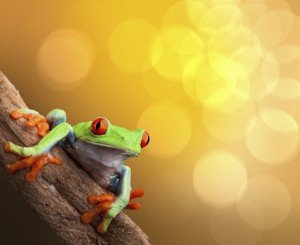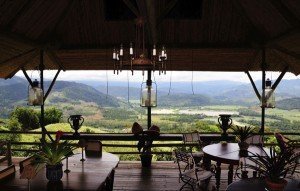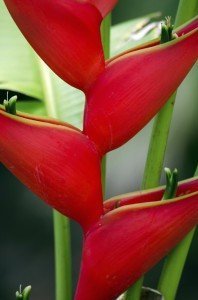
Oso Peninsula – Buckle Up For a Costa Rican Adventure
Oso Peninsula – Buckle Up For a Costa Rican Adventure
By William Burr
 Time seems to change everything, especially when it comes to international tourism. Some of the most remote places on the planet have come to life and become tourist meccas for those who want to experience nature in the raw. The Oso Peninsula at the southern tip of Costa Rica is just such a place.
Time seems to change everything, especially when it comes to international tourism. Some of the most remote places on the planet have come to life and become tourist meccas for those who want to experience nature in the raw. The Oso Peninsula at the southern tip of Costa Rica is just such a place.
The National Geographic Society named the peninsula the most biologically intense place on earth, with 13 separate ecosystems, almost 1,000 species of trees and nearly 100 varieties of birds. Toucans, white-faced monkeys, sloths, hummingbirds of a million colors, rare pumas and howler monkeys all flourish in some of the densest jungle in the Western hemisphere. Not long ago, getting there was an adventure in itself. Now, infrastructures have improved and eco-tourism is thriving. But the Oso Peninsula is still a wild place, with nature completely in charge.
I visited in February 1999 and quote from notes I transcribed at the time. “A three-hour drive took us from Golfito out onto the Oso Peninsula on a worsening road. Our rented red Toyota forded five rivers and grounded out on a hillock of gravel. We had lunch in a bar on stilts over a swirling ocean tidal river surrounded by mangroves and run by a gentle and friendly man who told us about his African ancestors. The end of the road was not many miles ahead, and we worried knowing we had to find shelter before
nightfall. We dodged rocks as big as wastebaskets, avoided deep muddy ruts and forded rivers swollen by the afternoon rain. Strangler figs formed a canopy overhead. All around us was a hilly and complete jungle. A red Macaw flew past our windshield. We stopped to see naturalists looking through binoculars at a white hawk. Finally, we ended up finding the only lodging for miles around and became their solitary guests. Jungle surrounded our cottage. Surf pounded 100 yards away. Wild horses roamed a field nearby, and we slept feeling like safari voyagers in the unknown.”
 Today, it has changed. The dense jungle, wild exotic animals and spectacular ocean crashing against jutting cliffs still remain just as they have for tens of thousands of years, but a new highway, #245, was recently completed, making it only a five-hour drive from San Jose to the Oso Peninsula. The previous trek, which took struggling automobiles like mine over the mountains, through raging rivers and into potholes the size of a suitcase, are only cherished memories.
Today, it has changed. The dense jungle, wild exotic animals and spectacular ocean crashing against jutting cliffs still remain just as they have for tens of thousands of years, but a new highway, #245, was recently completed, making it only a five-hour drive from San Jose to the Oso Peninsula. The previous trek, which took struggling automobiles like mine over the mountains, through raging rivers and into potholes the size of a suitcase, are only cherished memories.
Twenty-five percent of Costa Rica is composed of conservation and natural protected territory, with some of the most breathtaking scenery and most abundant wildlife in the Oso Peninsula’s Corcovado National Park. It is a vast wilderness area, the single largest expanse of lowland tropical rainforest in Central America and one of the tallest rainforests in the world. You can even pan for gold in its wild rivers. Exploring Corcovado Park should not be taken lightly, as this is a wild, untouched area. For those who want to experience a safe visit to the park, the best way to see it is with an experienced guide.
Going south from Puerto Jimenez, the only road ends at the tip of the Peninsula at a beach called Matapalo, a magical place where you can surf world-class waves as close to untouched paradise as you can get.
Costa Rica’s sport-fishing is world-renowned. Several records for sailfish and marlin having been recorded in the waters off Golfo Dulce, one of only three tropical fjords in the world, a huge bay that features 600-foot-deep waters in the center of the gulf that regularly attracts humpback whales on their northern and southern migrations.
The dry season, from January through April, is the best time to visit with reliably sunny weather, but it’s also the most popular and expensive time to go. For the best value, travel in the green season, from May through September, when lodges drop their rates. Afternoon rains are common during the rainiest months of October and November. Rates peak during the Christmas and New Year holidays.
But no matter when you go, and unlike my visit in 1999 when we stayed in a remote, isolated inn as the only guests, the lodging situation has changed. Though often intentionally rustic-appearing, dozens of wonderful, exotic inns are now scattered throughout the peninsula. Each of these remote lodges, inns or boutiques stress the fact that they are eco-friendly. Guests today will see tropical wildlife like toucans, parrots, rare howler monkeys, high-flying squirrel monkeys, coatis, kinkajous, agoutis, lazy sloths, peccaries, giant iguanas and, from time to time, even jungle cats like pumas, jaguarundis, ocelots and jaguars.
 These days, travelers may choose an inn of their dreams, the one that best meets their most exotic and romantic needs, not compelled to search the wilderness as we did. Take a look at a few of these to get an idea of what to expect.
These days, travelers may choose an inn of their dreams, the one that best meets their most exotic and romantic needs, not compelled to search the wilderness as we did. Take a look at a few of these to get an idea of what to expect.
Copa de Arbol Beach and Rainforest Resort
The Copa de Arbol Beach and Rainforest Resort, overlooking deep blue Pacific water, is set on 70 acres of rainforest between Drake Bay and Corcovado National Park. The complex offers luxury accommodations for couples, families and retreat groups who want a secluded rainforest location plus beach experience. Eleven newly constructed cabins, all of stunning design, feature exotic bathrooms and spacious sitting areas with magnificent ocean views. Guests are picked up at Palma Sur or Drake Bay airstrip and taken to the lodge by boat as there is no road to the resort. Each Balinese-style bungalow is equipped with air conditioning, ceiling fans, safes and lavish tiled showers, but there is no TV. Additional amenities include a cascading
infinity pool, yoga pavilion, massage treatments, stand-up paddle boards, kayaks and hiking trails. The surrounding jungle is pristine with cool creeks and towering trees filled with chattering monkeys. Copa de Arbol is an off-the-beaten-path resort that will appeal to nature lovers and those seeking understated luxury in an exotic locale.
Bosque del cabo
Bosque del Cabo, crowning a point 500 feet above where the Golfo Dulce meets the Pacific Ocean, is an eco-lodge offering a romantic rainforest getaway and a naturalist’s dream. Located in a unique position on the very tip of the Osa Peninsula, this 750-acre forest reserve features private, spacious bungalows and gorgeous houses perched on top of the cliffs of Cabo Matapalo, each with beautiful ocean views, tropical breezes and the rainforest growing at the doorstep. Ten beautifully crafted thatched roof bungalows are privately set among lush gardens, ocean views and modern bathrooms with outdoor garden showers. Porches are furnished with hammocks and easy chairs to enjoy tropical breezes and the rhythms of the pounding surf below. Hiking trails lead through the forest to deserted beaches on both the Golfo Dulce and the Pacific Ocean. The lodge’s lush gardens, full of tropical fruits and flowers, attract many of the colorful resident wildlife species. Guests can take a zipline into a tree observation platform, walk across the suspension bridge to the tropical garden or just relax by the pool. A solar-powered restaurant serves meals in an eco-friendly style.
Rainforest trails and pristine beaches are only steps away from the bungalow porches, giving access to calm sandy gulfside beaches, ocean tide pools and forest waterfalls. Also available is surfing, kayaking, waterfall rappelling, tree climbing, deep-sea fishing, boat trips, hiking and horseback riding.
Lapa Rios Ecolodge is a boutique eco-sanctuary nestled in the wildest part of the country on over 1,000 acres of private reserve, perfect for families, couples, nature lovers or anyone looking for an enriching and unfiltered stay in the jungle. Lap Rios was the first of its kind in the region; each bungalow features a private deck and patio garden complete with an outdoor shower, ocean views and beds draped in mosquito netting, all endeavoring to create a private, romantic setting. Miles of private, uncrowded trails through a primal rainforest border cool rivers, waterfalls, natural pools and unspoiled sandy beaches.
Aguila de Osa Inn
The Aguila de Osa Inn, on the outskirts of Corcovado National Park, is a captivating little eco-lodge perfect for families or couples looking for a relaxing jungle retreat with limitless access to the surrounding rainforest, ocean and wildlife. Guests enjoy complimentary use of kayaks to explore the river and surrounding bay area. Activities like hiking the jungle, ziplining and sport fishing can be arranged.
At Caño Island, only 12 nautical miles from the inn, visitors can see hawksbill sea turtles, white-tipped sharks, several species of moray eels and sting rays, a paradise for snorkelers, scuba divers, swimmers and sunbathers alike.
Casa Corcovado Lodge
Casa Corcovado Lodge, set on a cliffside high above the Corcovado National Park, is an eco-boutique hotel with some of the best views of any hotel in the country. Spacious and comfortable bungalows make Casa Corcovado a wonderful option for families and couples wanting to experience the rainforest in modern accommodations. Set among 170 acres of tropical rainforest and gardens, Casa Corcovado boasts 14 bungalows with contemporary and artistic furnishings, each with spacious bathroom, ample closet, ceiling fan, safe and minibar. There are no roads to Casa Corcovado Jungle Lodge, so guests will be picked up at either Palma Sur or Drake Bay airstrip and transported to the property by motor launch.
Just reading about the remote and exotic Oso Peninsula is intriguing, but it won’t be enough for adventuresome travelers who are looking for something pure and untouched by commercialism, something so different in its diversity that it’s unforgettable, you may decide to stay.
Request Information from These Communities
Receive your complimentary Relocation guide and magazine



